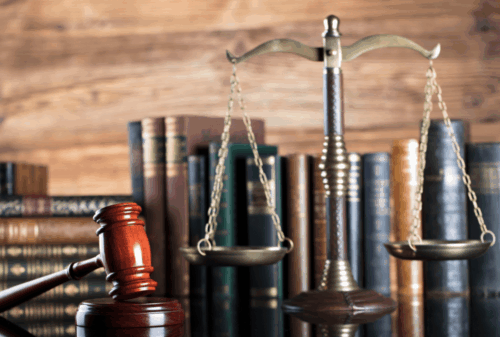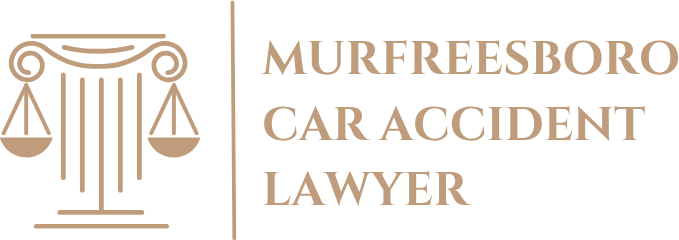Rear-end collisions are among the most common types of car accidents in Tennessee. While they’re often considered “minor” fender benders, they can result in serious injuries, expensive repairs, and complicated legal disputes. In most cases, people assume the driver in the rear is automatically at fault — but that’s not always true.
If you’ve been involved in a rear-end crash in Tennessee, understanding how fault is determined is crucial. In this blog, we’ll break down how Tennessee law handles rear-end collisions, when the rear driver might not be entirely to blame, and how fault impacts your right to recover compensation.
Call our Murfreesboro rear-end accident lawyers today to schedule a free consultation at (864) 335-9991.
Understanding Tennessee’s Fault Laws
Tennessee is a “modified comparative fault” state. That means the amount of compensation you can recover after an accident depends on your share of fault. If you’re found to be 50% or more at fault, you can’t recover any damages. If you’re less than 50% at fault, your compensation is reduced proportionally.
For example, if you were rear-ended but found to be 20% at fault for stopping abruptly without a reason, your compensation would be reduced by 20%.
This system makes fault determination especially important — and sometimes contentious — in rear-end collisions.
Is the Rear Driver Always at Fault?
In most cases, yes — but not always.
Generally, the driver who hits the car in front is presumed to be at fault because all drivers are expected to:
- Maintain a safe following distance
- Pay attention to traffic conditions
- Drive at a speed that allows them to stop safely
If a rear-end collision occurs, it typically means the rear driver was too close, distracted, or speeding.
However, there are exceptions where the lead driver may share some or all of the blame.
When the Lead Driver May Be at Fault
Although less common, the front driver can be partially or fully responsible in certain situations of a rear-end collision.
1. Sudden, Unjustified Stops
If a driver slams on the brakes for no reason or brake-checks another driver, they could be liable for the crash.
2. Brake or Tail Light Malfunction
If the front car has broken brake lights and the rear driver can’t see when they’re stopping, fault may shift.
3. Reversing Suddenly
If a vehicle unexpectedly reverses into the car behind it — such as when pulling out of a driveway or parking spot — the rear driver might not be liable.
4. Stopping in a Travel Lane Without Hazard Lights
If the lead car stops in a live lane of traffic due to a mechanical issue and doesn’t use hazard lights or move to safety, they may be partially responsible for the resulting crash.
In these cases, the rear driver may still be partially at fault, but the front driver’s actions could reduce or eliminate the rear driver’s liability under Tennessee’s comparative fault rules.
How Fault Is Determined in a Rear-End Crash
Insurance companies and courts look at a variety of evidence to determine who caused the collision:
- Police reports: Officers often note who was following too closely or if either driver violated traffic laws.
- Eyewitness statements: Witnesses can provide context about driving behavior, speed, or sudden stops.
- Vehicle damage: The location and severity of damage can indicate how the crash occurred.
- Traffic and surveillance cameras: Video footage from intersections, businesses, or dash cams can clearly show fault.
- Expert accident reconstruction: In severe cases, lawyers may bring in experts to analyze crash dynamics.
Because multiple factors are involved, assigning fault is not always straightforward — especially when injuries are involved.
Rear-End Collisions and Common Injuries
Even at low speeds, rear-end crashes can cause significant injuries.
Common examples include:
- Whiplash
- Neck and back injuries
- Concussions or traumatic brain injuries
- Herniated discs
- Soft tissue damage
Symptoms might not appear right away, which is why it’s essential to seek medical attention immediately after any accident — even if you feel fine at first.
Documenting injuries early helps protect both your health and your legal claim for a Murfreesboro rear-end collision.
What to Do After a Rear-End Collision in Tennessee
If you’re involved in a rear-end accident, take the following steps to protect your case:
- Call 911 – Report the accident and request medical help if needed.
- Document the Scene – Take photos of the vehicles, road conditions, traffic signs, and any visible injuries.
- Exchange Information – Get the other driver’s contact, license, and insurance details.
- Identify Witnesses – Ask for names and phone numbers of anyone who saw the crash.
- Avoid Admitting Fault – Stick to the facts when speaking with police or the other driver.
- Seek Medical Attention – Even minor soreness could signal a more serious injury.
- Contact a Car Accident Lawyer – A Murfreesboro car accident attorney can help you determine fault, deal with insurers, and protect your right to compensation.
Why You Need a Lawyer for a Rear-End Collision Case
Rear-end cases may seem straightforward, but insurance companies often try to shift partial blame to reduce what they owe. If you were injured in the crash, the stakes are even higher.
A skilled Tennessee car accident lawyer can:
- Investigate the collision
- Preserve and analyze evidence
- Deal with insurance companies
- Prove the other driver’s fault
- Maximize your financial recovery
Whether you were the front or rear driver, it’s worth speaking to an attorney to understand your legal options.
Don’t Assume Fault — Know Your Rights in a Rear-End Collision in Murfreesboro
In Tennessee, fault in a rear-end collision isn’t always automatic. While the rear driver is usually held responsible, the lead driver’s behavior and other circumstances can shift or share liability. Because of Tennessee’s comparative fault rules, even a small percentage of fault can reduce or eliminate your ability to recover compensation.
If you’ve been injured in a rear-end accident — whether you were hit or struck another vehicle — don’t guess about who’s to blame. Get the facts, protect your rights, and let an experienced car accident attorney help you build a strong claim.
Contact our Murfreesboro car accident lawyer and legal team today for a free consultation. We’re here to fight for the compensation you deserve.

